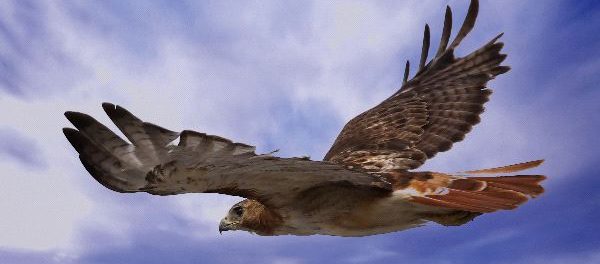Of all dangers, man is raptors’ biggest threat

Raptors are often thought of as strong, fierce birds of prey, but the reality is they face more threats than most people realize.
Many birds of prey species are highly vulnerable and have a harder time adapting than smaller bird species do when they are threatened. (A raptor is a bird of prey such as a red tail hawk or owl or eagle).
The biggest threats to raptors come primarily from humans. Car accidents are one of the leading causes of injury or death of birds of prey. Eagles, vultures and other raptors that feed on carrion commonly get hit when they dive into some road kill and find themselves too gorged to quickly fly off.
Other birds of prey, such as hawks, hunt in fields and edges near the road and can get hit when they focus on their prey instead of what’s coming their way when they fly across the street.
Another major threat to birds of prey is habitat loss. Several raptor species require very large territories in order to successfully hunt, find good nesting spots and have a better chance at overall survival.
With the decline of open land because of development and human encroachment, raptors have less space available for their survival needs.
Poison is another big threat to birds of prey.
Many people use pesticides and herbicides on crops to control rodents. Over time, this poison can be lethal to the birds that feed on these rodents. Bioaccumulation is the process in which something like poison can build up in the body of a predatory animal until the levels become too high and eventually kill it.
The best way to avoid this type of threat is to use natural pesticides or leave the rodents be and allow nature to run its course. Rodents are, after all, one of the favorite foods of many birds of prey.
Poaching can also have detrimental effects on a bird of prey. In many parts of the world, birds of prey, such as eagles or red tail hawks, are desired as trophies, much like lions or bears. Birds of prey are typically illegally killed for taxidermy purposes or for their decorative feathers. Other times, people take raptors in order to use them as falconry hunting birds.
Imprinting is another human threat to birds of prey.
Raptors learn critical hunting skills from their parents when they are young. If they are removed from their nest and taken away from its parents, they do not develop these skills that are critical for their survival.
Another downside of imprinting is these birds no longer fear humans and will approach human territories without caution, which can end up being its demise if the bird is released into the wild.
From keeping rodent and squirrel populations down to feeding on carrion, raptors play a critical role in our environment.
There are several ways you can help keep the threats to these magnificent creatures at a minimum. If you use outdoor chemicals, consider switching to organics or reducing the use of chemicals altogether. If you find a bird of prey or a nest in your backyard or field, leave it alone.
Be responsible when driving and avoid throwing trash or organic materials such as apple cores and banana peels out the window.
The bird may not eat it, but they will sure come looking for that opossum or groundhog that dined on the apple core shortly before getting hit by a passing truck.
By educating yourself and your community about the importance of birds of prey, you can aid in the protection of these beautiful and graceful predators.
Click here to read the original article published online at The Ledger, Friday, May 13.
Leave a comment